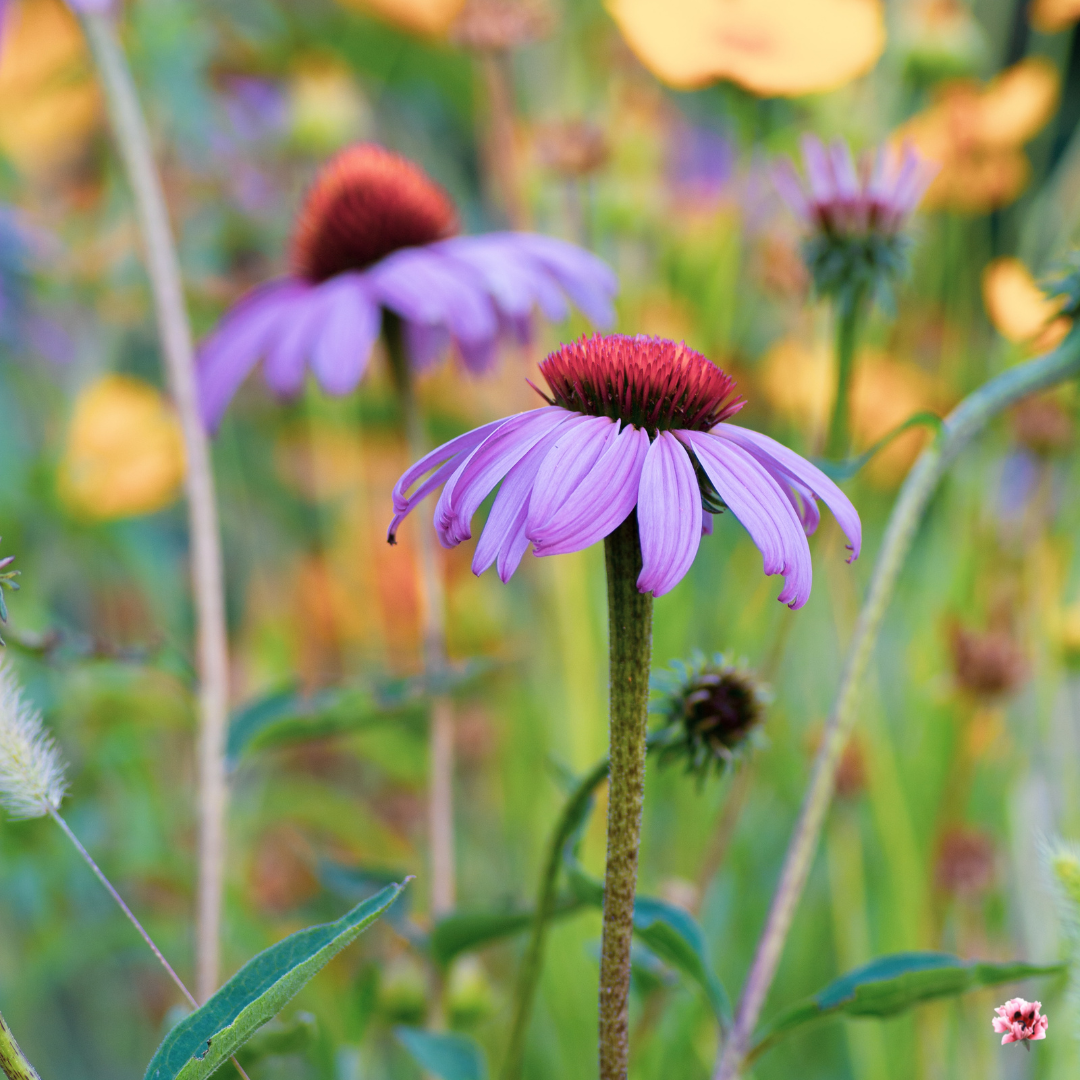
Grow Native
Why fight Mother Nature? Native flora is beautiful, easy to grow and actually reduces stress on the environment
When early settlers rolled across the prairie to make a home in Iowa, they didn’t find gladioluses, hostas or floribunda roses. Such beautiful flowers were brought over by settlers from Europe and Asia.
The settlers instead found woodland and prairie wildflowers and prairie grasses. Just as beautiful as the imports, these native plants were able to withstand Iowa’s harsh climate — marsh-like wet springs, desert-like summers and arctic-cold winters. They even endured trampling by buffalo, which once roamed our state freely.
At one time, Iowa was 85 percent prairie land. Only one-tenth of one percent of unplowed prairie remains. Only five percent of our 35 million acres remain woodland.
Replacing the native plants with “alien” or invasive non-native plants causes a downward spiral. Using chemicals and adding water to help them flourish increases stress to the environment.
Many organizations are restoring the prairie and planting wildflowers along roadsides. But bringing back Iowa’s native flora doesn’t have to stay among these groups. Any gardener can grow them in a home landscape.
Growing native plants requires a different mind-set, but the benefits are numerous. They require little maintenance. There is no need to fertilize or water in the summer. It may seem awkward, but roll up the garden hose. These plants were here before us, so there was no one watering them or adding fertilizer each week.
They have deep root systems, some with roots down 10 feet or more. This root system allows for better water filtration — water is absorbed instead of running off.
“Prairies are sponges,” said Inger Lamb, president of Iowa Native Lands and Iowa Prairie Network. Rain washes chemicals and oils off of roofs and streets and into our sewers, requiring human means to purify the water.
Prairie wildflowers are natural water purifiers. These root systems filter toxins and send cleaner water to the water table. Native plants do not need to be deadheaded or pruned, but may need to be cut back in the fall.
A wildflower garden can provide an enjoyable wildlife habitat. Certain animals, birds and butterflies feed only on native plants, and some native plants are only pollinated by certain insects. For example, monarch butterfly caterpillars only feed on milkweed family plants.
Growing these plants also can provide a sense of heritage — you’re putting back what was here in the beginning. Start with a small area, expanding while becoming accustomed to growing native plants.
Keep in mind the space and sun requirements — prairie flowers and grasses require full sun, while woodland plants prefer moist, shady areas. If there is a wooded area, create a small pathway lined with woodland flowers. Maybe create a quiet retreat with a bench surrounded by woodland plants.
If a yard lacks trees, prairie flowers would be perfect. Maybe a patch of prairie grasses and wildflowers would be better than constantly mowing and watering a manicured lawn. Research the different varieties. There is a rainbow of colorful choices.
“The mistake is that most people think it’s only a bunch of grasses,” Lamb says.
For prairie flowers in lavender, consider purple prairie clover and blazing star (liatris). Coneflower and Queen Anne’s lace add white. Butterfly milkweed and monarda provide red and orange, black-eyed Susans or tickweed (coreopsis) add yellow.
Gardeners should educate themselves before they start a wildflower garden. With benefits like low maintenance and water requirements, and a strong sense of heritage, how can a person go wrong?
Prairie Flowers and Grasses
Aster
Black-eyed Susan (Rudbeckia)
Blazing star (Liatris)
Coneflower
Little bluestem
Monarda
Purple prairie clover
Prairie dropseed
Queen Anne’s lace
Tickseed
Woodland Flowers
Cranesbill
Dutchman’s breeches
Jack-in-the-Pulpit
Jacob’s ladder
Mayapple
Solomon’s seal
Trillium
Virginia bluebells
By Emily A. Roush
Register Staff Writer
Originally Published in ©The Des Moines Register, May 10, 2003
© Copyright April Sky Flower Farm